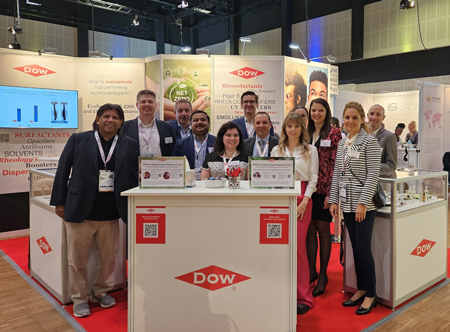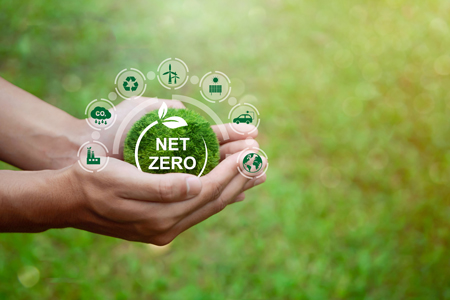
Dow Launches Readily Biodegradable Cleaning Solution at SEPAWA® CONGRESS Utilizing Circular Carbon Capture
Interview with Farooq Alam
Global Strategic Marketing Director for Dow Home Care, Dow
You have launched recycled carbon surfactants recently. Can you explain the origin of the bio surfactants you offer?
When creating EcoSense™ 2470 Surfactant in collaboration with our partner, LanzaTech, our goal was to enable our customers to quickly improve the carbon footprint of their detergent by using a material with excellent cleaning properties that is easy to use, effectively a drop-in solution and based on carbon sourced from recycling. This is an innovative solution because it doesn't compete for resources with food production but instead uses waste gases, such as those from steel production. Capturing these emissions and recycling them via gas fermentation process to produce ethanol and then surfactants results in an efficient capture and reuse of these waste gases.
Based on what technology have these been developed?
Many production processes emit waste gases, which are either burned to generate energy or released, contributing to carbon dioxide emissions. The production process of our surfactant is based on using waste gases containing carbon oxides from steel production and converting them through fermentation in reactors using naturally occurring microorganisms. These microorganisms use carbon oxides for their growth and produce ethanol as a byproduct. This way, the carbon residues from steel production are reused to produce ethanol and subsequently ethylene oxide. This enables the ethoxylation process without the need for fossil-based raw materials. Carbon oxides that would otherwise be released into the atmosphere are recycled and further reduce the demand for fossil fuels.
What are the applications for these bio surfactants?
Liquid laundry detergents, automatic dishwashing detergents, hard surface cleaners and potentially hand dishwashing liquids.
Which claims can producers make when formulating with your biosurfactants?
Pioneering Sustainability: Ecosense 2470 surfactant is your gateway to tomorrow's sustainability ecosystem, led by industry leaders DOW and powered by LanzaTech. It allows detergent manufacturers to play a vital role in advancing sustainability by incorporating recycled carbon materials and cutting-edge climate tech into their products.
Uncompromised Performance: Early adopters of Ecosense 2470 can embrace a drop-in solution that maintains the performance standards of traditional fossil-based surfactants. This innovation enables the creation of a circular carbon economy without sacrificing product quality, making it a game-changer for the industry.

How does this surfactant compare to other bio-surfactants on the market?
What sets recycled carbon technology surfactants, such as EcoSense™ 2470 Surfactant, apart from other biosurfactants and biobased surfactants is their distinctive production method utilizing recycled carbon technology. Due to their both water-attracting and water-repelling nature, they possess versatile properties suitable for diverse home care applications and exhibit unique interfacial characteristics, rendering them appealing in terms of cleaning, foam, or emulsion stabilization.
The capability to provide cleaning solutions made from recycled carbon with outstanding effectiveness is a distinguishing factor in surfactant choice.
EcoSense™ 2470 Surfactant underscores our dedication to eco-conscious surfactant manufacturing, serving as the gateway to a sustainable future. It sends a resounding message to both home care brand owners and consumers that sustainability and superior performance work hand-in-hand harmoniously.
This remarkable surfactant is the product of a collaboration with LanzaTech, a renowned pioneer in circular carbon capture technology. LanzaTech is a first mover in an innovative method that involves transforming recycled carbon into ethanol, a significant step towards enhancing the sustainability of cleaning products.
Do bio surfactants really reduce the carbon footprint significantly?
This project enables the supply of low carbon and environmental footprint material, reducing our customer’s Scope 3 footprint and accelerating their own path to decarbonization, which are often ambitious by 2030 standards.
Ethylene oxide made from captured CO2 demonstrates not only a lower carbon footprint, but a lower environmental footprint (water footprint, land use, eco-toxicity, etc…) compared to fossil and bio-based ethylene oxide. Moreover, there is no competition with food compared to bio-ethanol.
Using Ecosense 2470 surfactant would reduce CO2 footprint in the range of 40% vs an equivalent surfactant based on petroleum based Ethylene Oxide.
Last but not least: How did you enjoy the SEPAWA Congress 2023?
It was a great experience to meet, listen and see the household chemistry innovators. We have seen an increasing emphasis on environmental aspects such as carbon footprint and life cycle assessment. We observe a real effort across the industry focused on green transformation and offering customers innovative solutions.




